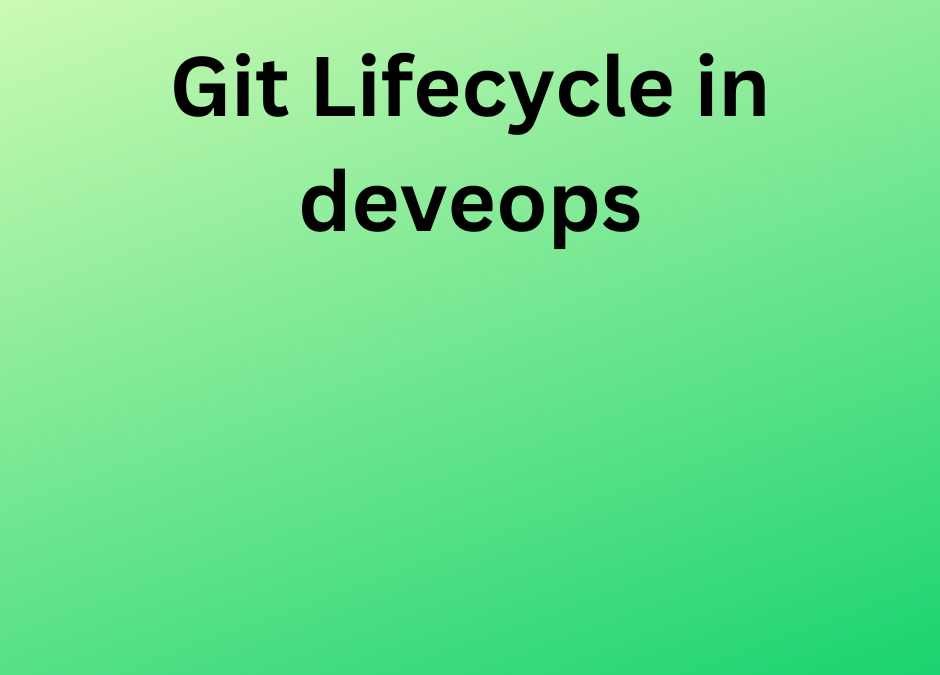In DevOps, Git plays a crucial role in the software development lifecycle by providing version control and collaboration capabilities. The typical Git lifecycle in a DevOps environment involves the following stages:
- Code Development: Developers write and modify code using their local development environments. Git repositories are set up to track changes to the codebase.
- Commit: Developers use Git commands like
git addto stage changes and thengit committo create a new commit in the local repository. Commits are snapshots of the code at a specific point in time and include a description of the changes made. - Branching: Git allows developers to create branches to work on new features or bug fixes independently. This isolates their changes from the main codebase (often called the “master” or “main” branch). Branches facilitate parallel development.
- Push: After committing changes to their local branch, developers can use
git pushto upload those changes to a remote Git repository, usually hosted on a platform like GitHub, GitLab, or Bitbucket. Other team members can access these changes once they are pushed. - Continuous Integration (CI): In DevOps, CI tools automatically build and test the code when changes are pushed to the remote repository. This ensures that the new code doesn’t break existing functionality and maintains the overall code quality.
- Pull/Merge Requests: When developers complete their work on a feature or bug fix branch, they create a pull request (or merge request) to propose their changes for integration into the main branch. The pull request contains a description of the changes and is reviewed by peers.
- Code Review: Team members review the code changes in the pull request, provide feedback, and discuss the proposed modifications. Code review is an essential practice in DevOps to ensure high-quality code and knowledge sharing among team members.
- Merge: Once the pull request is approved, the changes are merged into the main branch, which triggers the CI/CD pipeline for automated deployment and testing.
- Continuous Deployment/Delivery (CD): In some cases, continuous deployment is implemented, which means that approved changes are automatically deployed to production without human intervention. In other cases, continuous delivery is used, which means that changes are automatically deployed to a staging environment for further testing before being manually promoted to production.
- Monitoring and Feedback: After deployment, the application is monitored in the production environment to identify and fix any issues that may arise. Feedback loops help improve the software and the development process iteratively.
This Git lifecycle, combined with other DevOps practices, ensures efficient collaboration, version control, and continuous improvement in the software development process.
DevOps training in coimbatore is a program or course designed to provide individuals with the knowledge and skills required to adopt and implement DevOps practices in software development and IT operations. DevOps is a set of principles, practices, and tools aimed at fostering collaboration and communication between software development teams and IT operations teams, with the goal of delivering software more rapidly, reliably, and efficiently.

